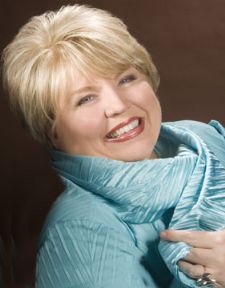|
Symphony
SRS SEASON ENDS WITH RESOUNDING TA-TA-TA-BANG
by Terry McNeill
Sunday, June 1, 2025
Symphony
YOUTHFUL VIRTUOSITY ON DISPLAY AT USO'S MAY CONCERTS
by Peter Lert
Saturday, May 17, 2025
Symphony
MYSTICAL PLANETS AND LIVELY GERSHWIN ORTIZ AT FINAL SRS CONCERT
by Peter Lert
Sunday, May 4, 2025
Symphony
VSO'S CONCERT MUSIC OF TIME, MUSIC OF PLACE
by Peter Lert
Sunday, April 27, 2025
Choral and Vocal
VOCAL ELEGANCE AND FIRE AT THE 222'S RECITAL APRIL 26
by Pamela Hicks Gailey
Saturday, April 26, 2025
CANTIAMO SONOMA SINGS AN INSPIRED GOOD FRIDAY MOZART REQUIEM CONCERT
by Pamela Hicks Gailey
Friday, April 18, 2025
DRAMATIC SHOSTAKOVICH SYMPHONY CLOSES PHILHARMONIC'S 25TH SEASON
by Terry McNeill
Sunday, April 13, 2025
LARGE COLLEGE OF MARIN AUDIENCE GREETS STOPHER ARTISTRY
by Terry McNeill
Saturday, April 5, 2025
Chamber
FRISSON DELIVERS SHIVERS OF DELIGHT
by Abby Wasserman
Sunday, March 30, 2025
OLD AND MOSTLY NEW IN SRS MARCH CONCERT IN WEILL
by Peter Lert
Saturday, March 22, 2025
|
 |
 Soprano Christine Brewer in Marin |
OUTSIDE THE ROMANTIC PALE
by Terry McNeill
Tuesday, April 13, 2010
In a finale to a year of literature-based programs (“Season of the Scribe’) the Marin Symphony April 13 presented a curious mix of compositions that purported to have a common romantic theme. Preceding the sonic splendor of Wagner’s Siegfried Idyll and the “Prelude and Liebestod” from Tristan und Isolde was an eclectic first half of works by Samuel Barber and contemporary composer David Carlson, both well outside the 19th-century romantic pale.
In the concert’s opening Second Essay for Orchestra of Barber, Music Director Alasdair Neale gave the baton to protégé Edward Abrams, and all went well with the 12-minute work from 1942. The strings were sonorous, with Mr. Abrams bringing balanced control to this concentrated piece. There was rich clarinet playing from principal Arthur Austin and a lovely trio with Mr. Austin, principal bassoonist Carla Wilson and oboist Margot Golding. The introspective nature of Barber’s popular piece, at least before the powerful climaxes and foreboding unison strings at the end, was artfully introduced by flutist Monica Daniel-Barker.
Prior to intermission the Symphony presented the world premiere of Carlson’s The Promise of Time, featuring soprano Christine Brewer. Based on dramatic lyrics by Susan Kinsolving, the three-movement work was part of a commissioning project by a Silicon Valley philanthropist that has benefited several Bay Area orchestras. Composed of three parts – “Blossoms Abundant,” “Velocity,” and “Hourglass” – the thick-textured work was not always cordial for Brewer’s powerful voice. The musical references seemed mostly to come from Richard Strauss’ “Four Last Songs,” an autumnal work from the post-World War II period just before Strauss’ death. In “Velocity,” Brewer sang with weighty projection, but the words, at least from the tenth row, were mostly unintelligible.
The more lyrical third movement, absent the vehement multiple crescendi of “Velocity,” and with themes rising from the depths of the orchestra, was telling. Mr. Neale, conducting from score, caught the nostalgic bent of the music, and it seemed a long-familiar work rather than something novel and demanding. The massive ending chords with cymbals and brass were thrilling. The composer and lyricist took bows with Mr. Neale and Ms. Brewer.
Following a long intermission, Mr. Neale conducted an assured Siegfried Idyll (1870) performance, offering brisk tempos without score or baton. The long clarinet solo from Mr. Austin joined with pungent playing from the oboes. It was elegant Wagner throughout, the conductor clearly relishing the long romantic lines after the histrionics of the concert’s first half.
The “Idyll,” one of Wagner’s few non-operatic works, led smoothly into Isolde’s panegyric to warmly receptive death. Ms. Brewer returned to stage center to pit her formidable voice against the large orchestra. She had all well in hand, with only the low range being covered by the orchestra, and her top notes resounded to the last row of seats. The Symphony’s five-member horn section, led by Alex Camphouse, gave potent support. It was exalted music making of a score that will never seem routine. Mr. Neale crafted the extended operatic phrases with care and visual attention to Brewer’s singing.
Oddly the great Wagner ode didn’t have an ecstatic effect on the nearly full house. There were the standard flowers for the soloist, but not a universal standing ovation or many recalls. The performance deserved more.
|

